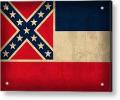

Originally Posted by
blackhawknj

IMHO Hatcher's Notebook is THE source to read regarding the LN Springfield question.
He found the bad vintages were from 1906 and 1911 IIRC. Both the steel and the manufacturing processes were improved and the decision was made in the late 1920s to eventually withdraw the LNs from service, due to the tight defense budgets of those years that was not implemented.
This is not accurate, the board investigating the low numbers recommended withdrawing them but ordnance deferred making a decision.
Some have opined that SA didn't have much to do to keep the doors open in this timeframe and declaring the national arsenal's rifles unsafe and therefore needing new ones was a political move.
Last edited by PhillipM; 01-23-2014 at 02:17.
Phillip McGregor (OFC)
"I am neither a fire arms nor a ballistics expert, but I was a combat infantry officer in the Great War, and I absolutely know that the bullet from an infantry rifle has to be able to shoot through things." General Douglas MacArthur



 Reply With Quote
Reply With Quote




